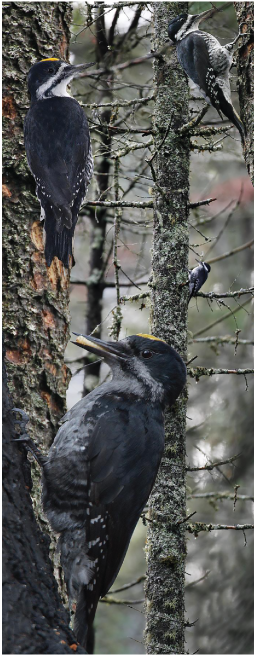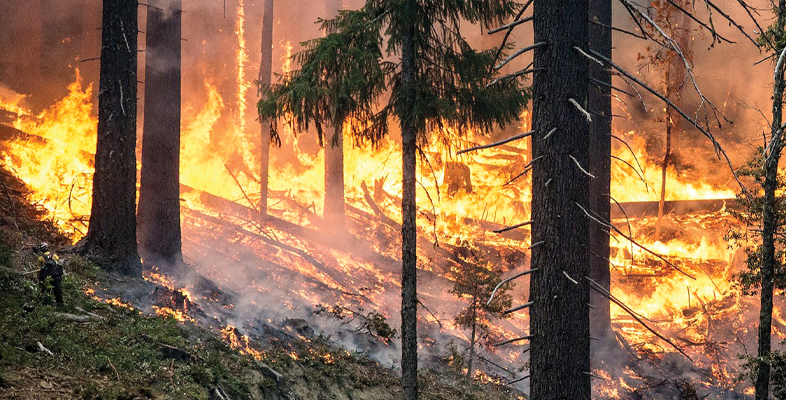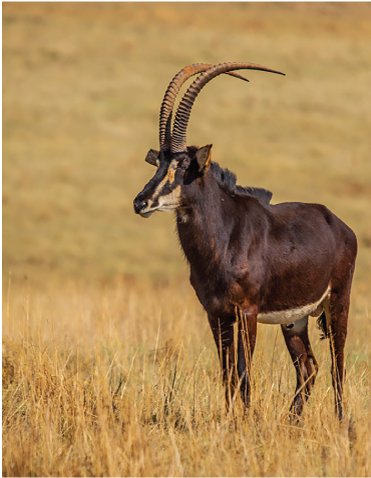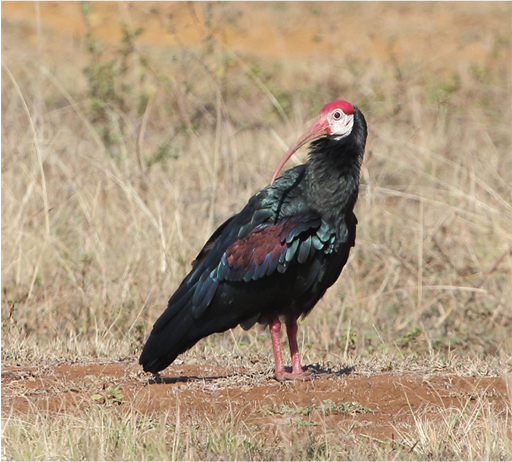3.2 Benefitting from fire
Like plants, some animals benefit from the habitats generated by recurrent fires and may even be reliant on them. The new, high quality vegetation regrowth after fires serves as an important food source for many large mammalian herbivores. For example, sable antelope (Hippotragus niger, Figure 16) rely on post-fire regrowth to help cope with limited food availability during the dry season. This regrowth has been shown to be crucial for lactating females, in particular (Parrini and Owen-Smith, 2010).
Many birds, for example the southern bald ibis (Geronticus calvis, Figure 17) depend on fires by making extensive use of recently burned grassland for foraging for insects and other invertebrates.
Migrating hummingbirds in tropical ecosystems rely on post-fire flowers to fuel migration (Contreras-Martinez and Santana, 1995) and the black-backed woodpecker (Picoides arcticus, Figure 18) inhabits severely burned coniferous forests in North America where it feeds on beetle larvae and nests in trees recently killed by fire (Collard, 2015).

The black-backed woodpecker (Picoides arcticus) is highly dependent on burned coniferous forests in North America with abundant fire-killed trees. They feed primarily on wood boring beetle larvae which are abundant after the adult beetles have laid their eggs on trees killed by fire. It also nests in trees recently killed by fire (Collard, 2015).


